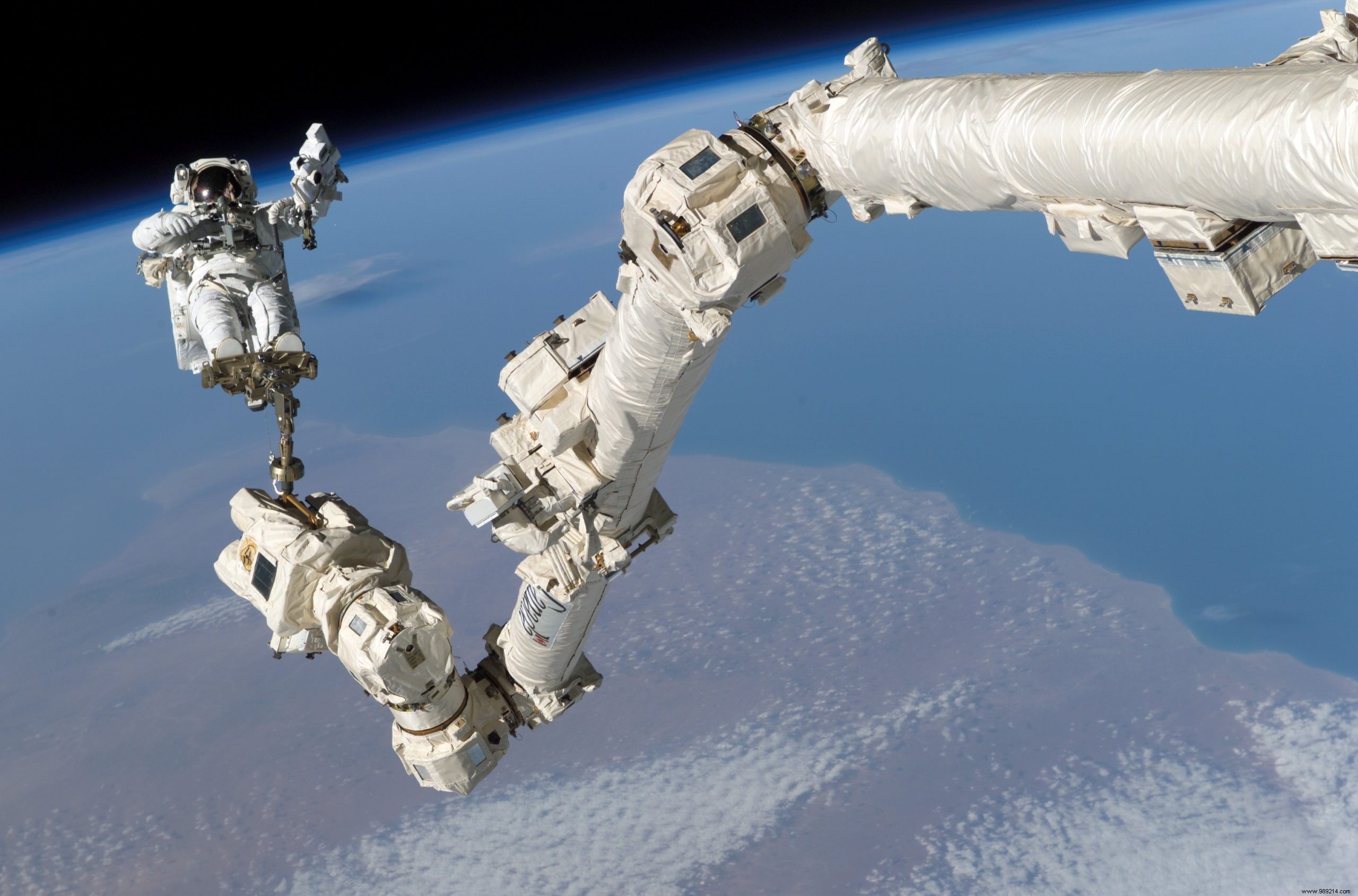Space debris recently struck and damaged the robotic arm of Canadarm2 on the International Space Station (ISS). If the structure is still operational, this incident reminds us that low Earth orbit is full of objects too small to be tracked.
More than 23,000 pieces of debris are tracked in low Earth orbit to help satellites, starships and the ISS avoid collisions, but many more, smaller than a tennis ball, always go unnoticed. According to a recent ESA report, around 130 million fragments of anthropogenic material smaller than one millimeter are currently orbiting the Earth. All of these objects move at several thousand km/h and can, no matter how small, cause significant damage if touched.
More recently, one of these pieces of debris punctured the thermal blanket of Canadarm2. It is not known precisely when the impact occurred, but the damage was first noted on May 12 during a routine inspection conducted jointly by NASA and the CSA (Canadian Space Agency).
The Canadarm2, designed by Canadian engineers, has been an integral part of the space station since 2001.
Basically, it's a multi-jointed titanium robotic arm featuring two identical "hands" at each end to help maneuver objects outside the body. 'ISS. They are also used to perform station maintenance operations. Canadarm2 can be positioned anywhere around the Station as needed, and each end can be used as an anchor point. Concretely, while one is fixed, the other can work.

Fortunately, the structure is still operational. "Despite the impact, the results of the ongoing analysis indicate that the arm's performance remains unchanged “, indeed details the ASC in a blog post. “Damage is limited to a small section of the arm boom and thermal blanket. Canadarm2 will therefore continue to conduct its scheduled operations s".
This time it will be fine. But this incident cannot simply be ignored. As a reminder, just last year, the ISS had to perform three emergency maneuvers in order to avoid collisions with space debris.
"To continue to benefit from the science, technology and data that space operations bring, it is essential to achieve better compliance with the directives of space debris mitigation in the design and operation of spacecraft" , had then underlined Tim Florer, head of the space debris office of the ESA. “It cannot be stressed enough – it is essential for the sustainable use of space ".